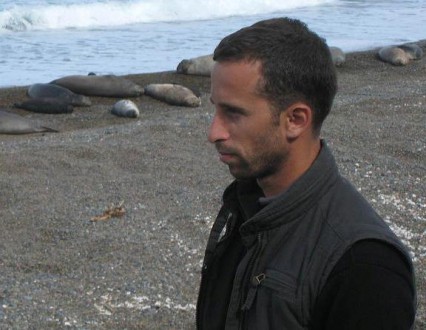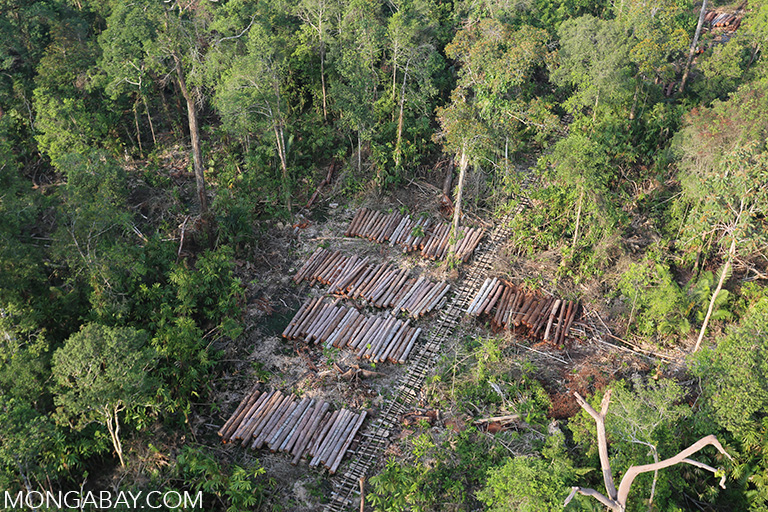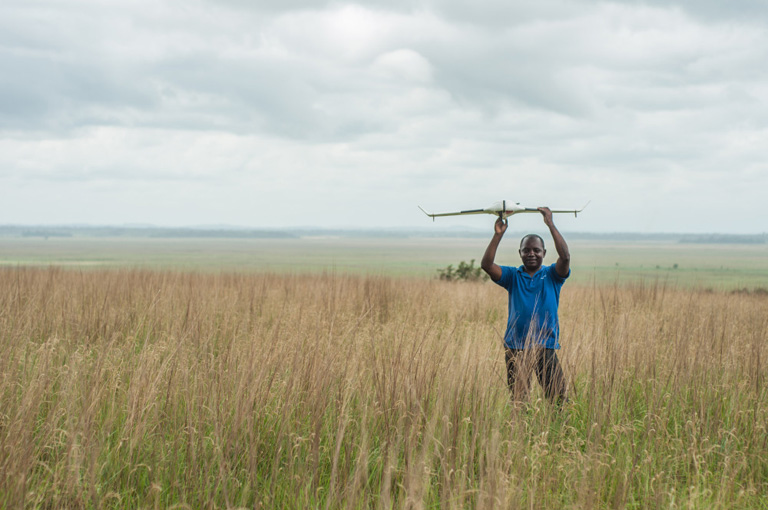- Unmanned Aerial Vehicles (UAVs), a.k.a. drones, are used increasingly in many aspects of forest and wildlife conservation.
- Dr. Nir Tenenbaum highlights the differences in UAV capabilities recommended for general conservation versus anti-poaching missions and the difference between preventing and responding to poaching events.
- Deploying UAVs for anti-poaching relies on trained on-the-ground ranger teams.
One of most publicized conservation technology in recent years has been the use of drones (a.k.a. Unmanned Aerial Systems (UAS) or Unmanned Aerial Vehicles (UAV)) to combat poaching.
Dr. Nir Tenenbaum, a trained veterinarian, served in the Israeli air force and defense industry for over 17 years and has since been active advising conservationists and governments in the surveillance and anti-poaching arena. We spoke with Nir about the current state of Unmanned Aerial Vehicle (UAV) technology in wildlife conservation.
Wildtech: What is the current state of UAV use for anti-poaching applications?
Nir Tenenbaum: As you have likely seen, there are many companies and non-profit organizations around the world publishing their “drone anti-poaching work,” especially in southern Africa, where poaching conflict is increasing rapidly. However, to date, no unmanned aerial solution has been applied successfully to direct anti-poaching activities – not because the systems are inadequate, but rather because they are not selected, used, and deployed correctly for this role.
For example, according to South Africa National Parks authorities, no company or organization is officially working with or flying for them, although they do allow companies and organization to come in and display their capabilities.

Wildtech: So are there any areas of wildlife conservation where UAVs are being used successfully?
Nir Tenenbaum: It is imperative to distinguish between anti-poaching and general conservation missions that can use drones. General conservation missions may include a survey of populations, habitat monitoring, mapping, food source evaluation, or perimeter and water holes inspection. UAVs and payloads most suitable for these missions are characterized by simplicity, low cost, short- to medium-level range and endurance, and non-gimbaled (i.e. less stable) payloads, usually with off-the-shelf still cameras or FLIR [Forward-Looking InfraRed] sensors. These systems are being used successfully for general conservation, but they lack real-time downlink capabilities and need post-flight examination of any photographic data collected.
Wildtech: How are these existing conservation UAV technologies being applied to anti-poaching efforts?
Nir Tenenbaum: The desires of people in the field for security conservation missions run by affordable UAVs are more complicated and can be basically divided into two types of missions: response and prevention. Response missions describe reactions to unusual events that are either suspected, or have already been detected in short range from ranger units. These include rescue, human-wildlife conflict, poaching events, fire, and crime.

UAV systems for these missions must help the rangers detect the actual event in progress and respond appropriately. UAVs and drones for this mission type require simplicity, automation, short range, short endurance, low cost and real-time data, they fall into what I call the Micro or Mini UAV category. Currently, several organizations have achieved some success in this area, but we haven’t seen any completely effective system, especially one that is low-cost.
Wildtech: Where do these organizations fall short of prevention?
Nir Tenenbaum: Prevention requires detection from routine inspection of high-threat areas and early detection and classification of threats before they materialize and occur. It also requires apprehension of intruders after they are detected, which means a UAV would need the ability to identify and then follow targets until apprehension.
A video describes (at around 10:00 in the video) the successful use of drones to apprehend poachers in South Africa, but if you pay careful attention, you will see that the initial detection of the event was not by the drone. The threat was detected independently, and only then was the drone deployed in response to the known location.

Wildtech: What’s important about this distinction?
Nir Tenenbaum: The night detection of the poachers was great as support– but it was made as a response in a known small area and not preventative. The platforms presented in the news clip are for response only – used as response for events after the activities have been detected. As such, there are simpler and more reliable drone systems out there that are easy for rangers to operate and not force the reserves to rely on operators from other organizations.
Wildtech: What does it take for a drone to be preventative?
Nir Tenenbaum: UAVs for these missions require a higher level of quality and durability, along with longer range, longer endurance, and capability to carry better (heavier) payloads than the systems that are currently being advertised for anti-poaching efforts. Anything that will be effective in poaching prevention missions comes with a large price tag – I would be doubtful of any system costing under US$250,000. And, in the end, UAV’s are not necessarily the best tool for prevention, but should be used as a piece in an overall solution incorporating additional early detection systems.

Wildtech: So how do we go about using UAVs to prevent poachers from getting into these areas on a smaller budget?
Nir Tenenbaum: Again, it’s important to remember that UAVs are just one type of an early detection system and not the most suitable one in all areas. The mission itself must define the platform and system to be deployed, rather than having the system be coerced to perform a mission it is not designed for. Drones for other conservation activities, such as research, habitat monitoring, survey and mapping can and will tend to be of a simpler design, based on Remote-Controlled (RC) platforms, carry simpler modular payloads, and have short potential range (< 3 km) and endurance (< 60 minutes).
Drones for intelligence, surveillance, and reconnaissance (ISR) conservation missions, such as anti-poaching and protection, tend to require higher quality and performance, including carrying heavier, higher-quality payloads, providing real-time data, and having longer range and endurance.
It’s important to remember that, depending on the terrain and habitat type, there may be alternative solutions to these problems. UAVs are not the catch-all device the conservation world was hoping for and must be integrated with other systems in order to carry out the functions that many people expect of them.
More about Dr. Tenenbaum can be found on his website wildeas.org, along with supplementary information, including the UAS consumer guide, a guide to seeing which drone might suite your wildlife conservation needs. Nir and other UAV experts are speaking at the California Academy of Sciences “Conservation Drones Summit” September 17 in San Francisco, which wildtech.mongabay.com plans to cover. We will also be posting soon on “InFrequently Asked Questions” for investing in UAV systems – stay tuned!
